What is an MC4 Connector Extension Cable and How Does It Work in a Solar System?
When solar panels are installed farther apart, power loss and connection problems can easily occur. Many users face this issue when connecting panels to charge controllers or batteries across long distances.
An MC4 connector extension cable bridges the gap between solar panels and system components, providing a waterproof, secure, and plug-and-play solution for outdoor solar installations.
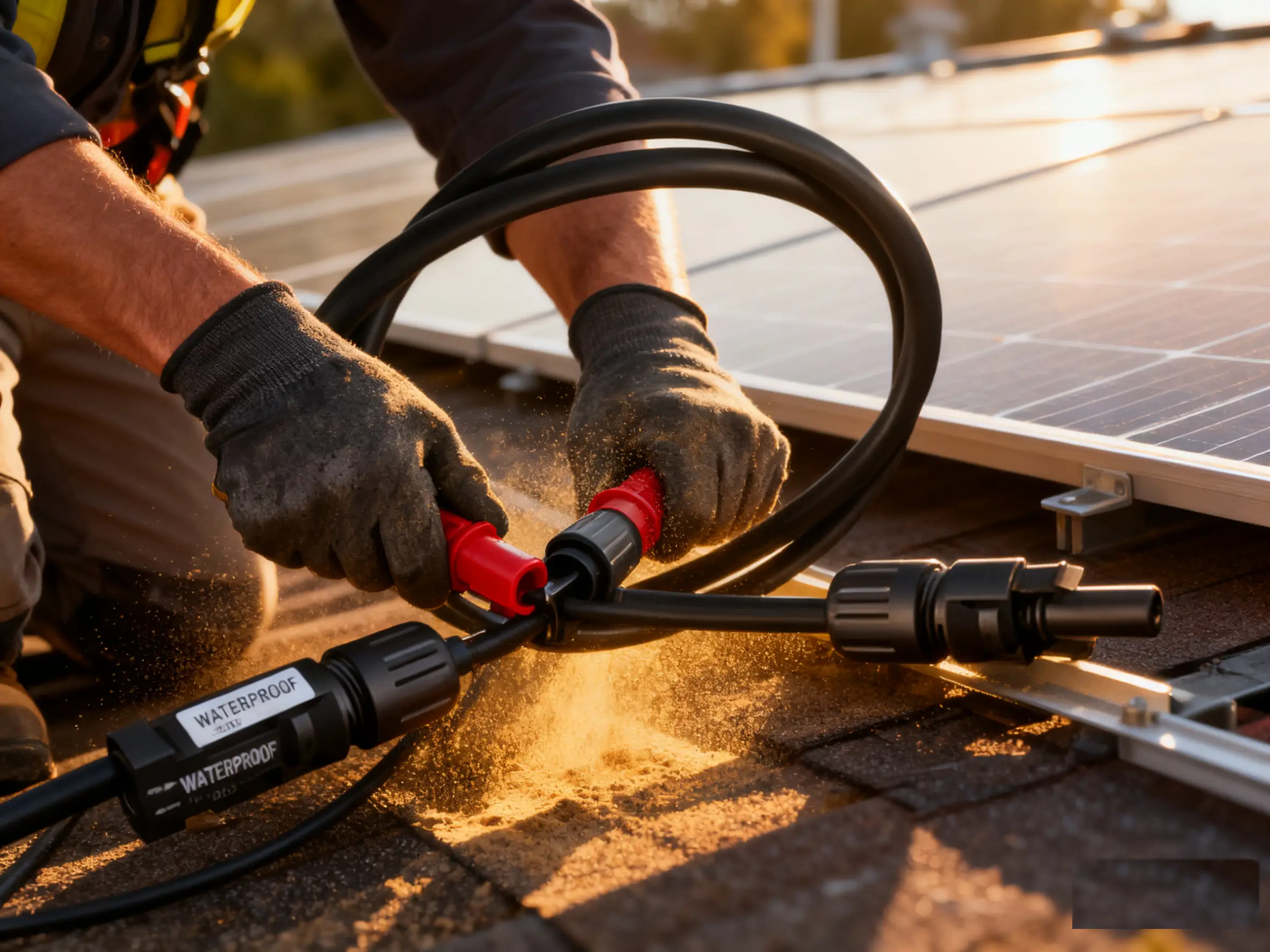
Installing a solar PV system is not just about panels and inverters — the cables in between matter just as much. Let’s go step by step and understand how these cables work, why sizing matters, and what to look for before installation.
What is an MC4 Connector Extension Cable?
When your panel leads are too short, connecting components safely becomes a challenge.
An MC4 connector extension cable1 is a pre-assembled solar cable with male and female MC4 connectors at each end, designed to extend the connection between solar panels and other PV components.
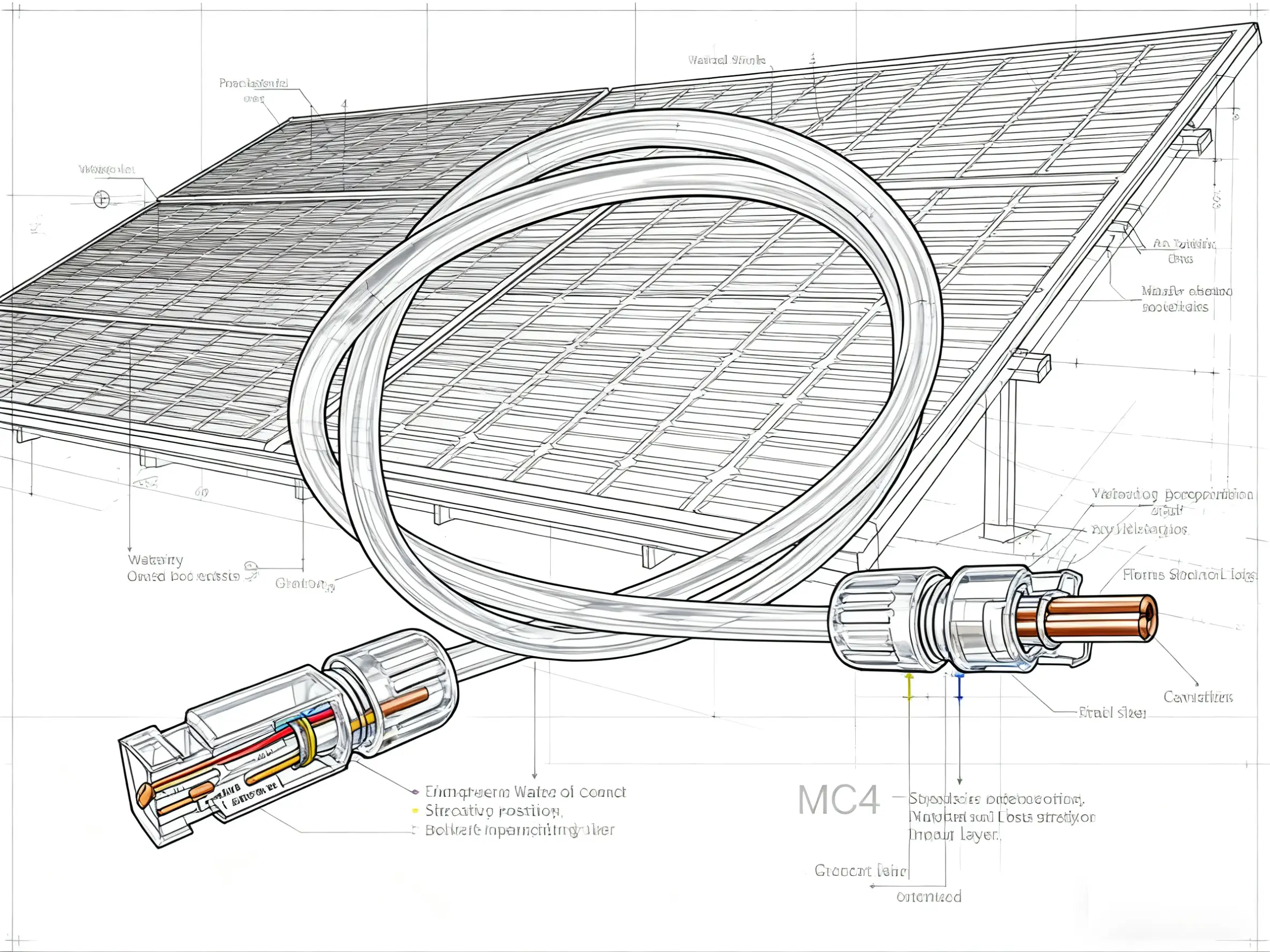
Understanding the Basics
Each MC4 extension cable includes one male and one female connector, both crimped onto tinned copper wires with UV-resistant insulation. These cables allow easy “plug-and-play” installation, making it simple to extend solar panel leads without cutting or soldering.
Typical characteristics include:
| Specification | Typical Value |
|---|---|
| Rated Voltage | 1000V–1500V DC |
| Conductor | Tinned Copper |
| Insulation | XLPE / PV1-F |
| Waterproof Rating | IP67 |
| Temperature Range | −40°C to +90°C |
| Connector Type | MC4 Male & Female |
This design makes MC4 extension cables ideal for both residential and commercial solar applications. They help maintain consistent voltage output while keeping connections safe and weatherproof.
How Does an MC4 Extension Cable Work in a Solar PV System?
When you expand a solar array or move panels further away, standard panel leads often can’t reach your combiner box or controller.
An MC4 extension cable extends solar panel output leads2, maintaining polarity, minimizing voltage loss, and ensuring a stable electrical connection between panels and the system.
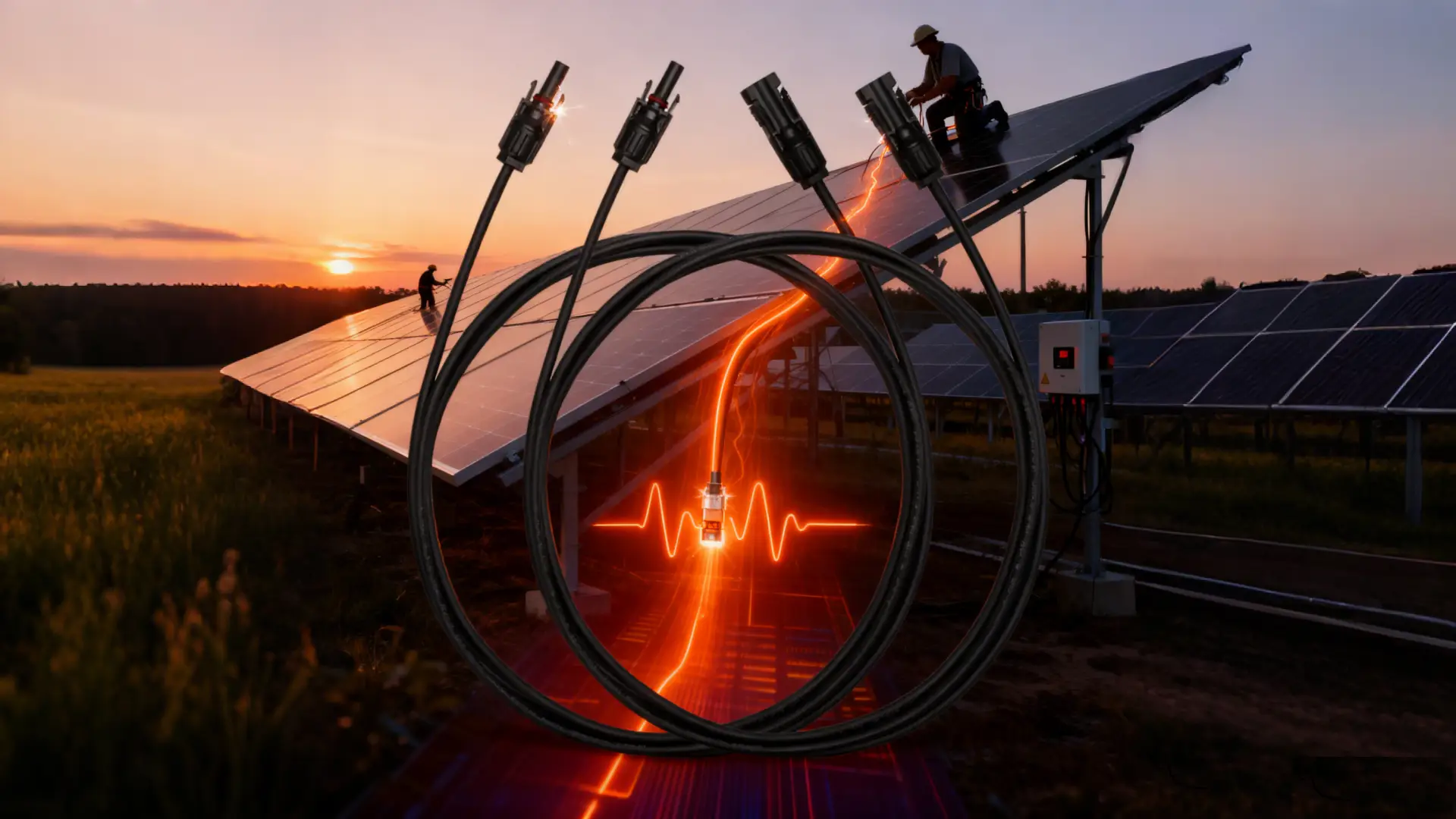
How It Connects
Here’s how MC4 extension cables function in a system:
- Each solar panel has a factory-fitted pair of MC4 connectors (one male, one female).
- The panel’s male MC4 plugs into the female connector of an extension cable.
- The panel’s female MC4 connects to the male side of another cable.
- These cables then run to the charge controller or combiner box.
This ensures a secure, low-resistance DC path between the panels and other components. The built-in locking tabs prevent accidental disconnection even in windy or vibrating conditions.
Real-World Use
I once worked on a 5kW rooftop system where each panel string ran nearly 15 meters. Without MC4 extension cables, installers would have needed to cut and crimp new connectors — a slower and riskier process. With factory-sealed extensions, the setup was quick, safe, and waterproof.
What Length and Wire Size Are Best for MC4 Extension Cables?
Using the wrong wire size or cable length can waste power and overheat your system.
Choose MC4 extension cables with the shortest length possible and a wire size that keeps voltage drop3 under 3% for your current load.
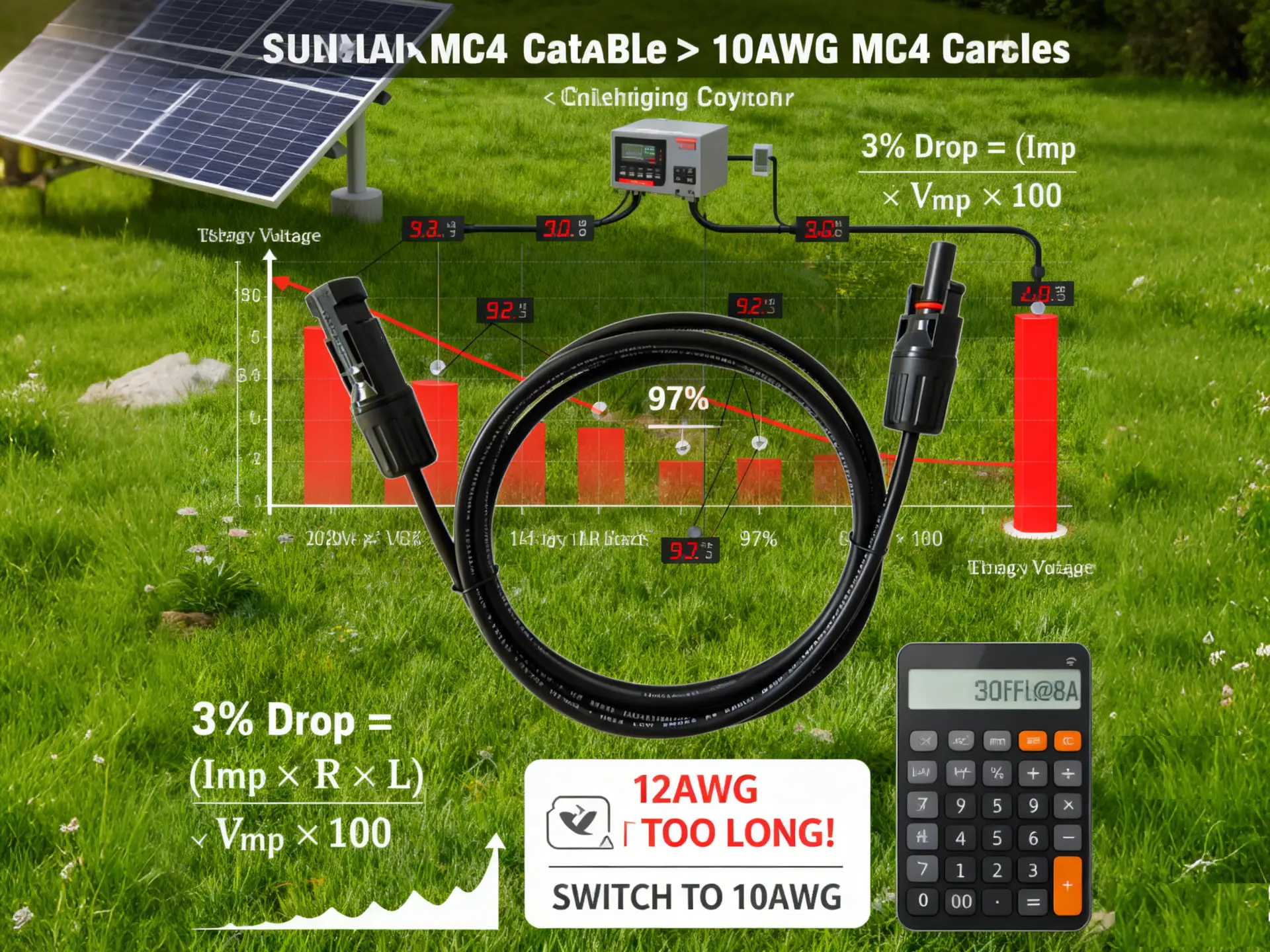
How to Choose
The cable size depends on both current flow and distance between components. Longer cables create more resistance, which reduces system efficiency. To minimize losses, thicker cables are recommended for longer runs.
| System Power | Cable Size | Max Recommended Length |
|---|---|---|
| ≤ 200W | 4mm² (12AWG) | 1–5m |
| 200W–800W | 6mm² (10AWG) | 5–15m |
| ≥ 1kW | 6mm² (10AWG) or larger | 10–30m |
Practical Tip
During one off-grid project, I measured a 1.2V drop when using 4mm² cables over 25 meters. After switching to 6mm² cables, the drop reduced to 0.4V and battery charging improved by nearly 5%. This experience taught me to never ignore cable resistance — it’s a small factor with big impact.
Are MC4 Extension Cables Waterproof and Safe for Outdoor Installations?
Solar systems face intense sun, rain, dust, and temperature swings daily. Poor cables can fail within months.
MC4 extension cables are built to be waterproof, UV-resistant, and fire-retardant, ensuring safe long-term outdoor performance.
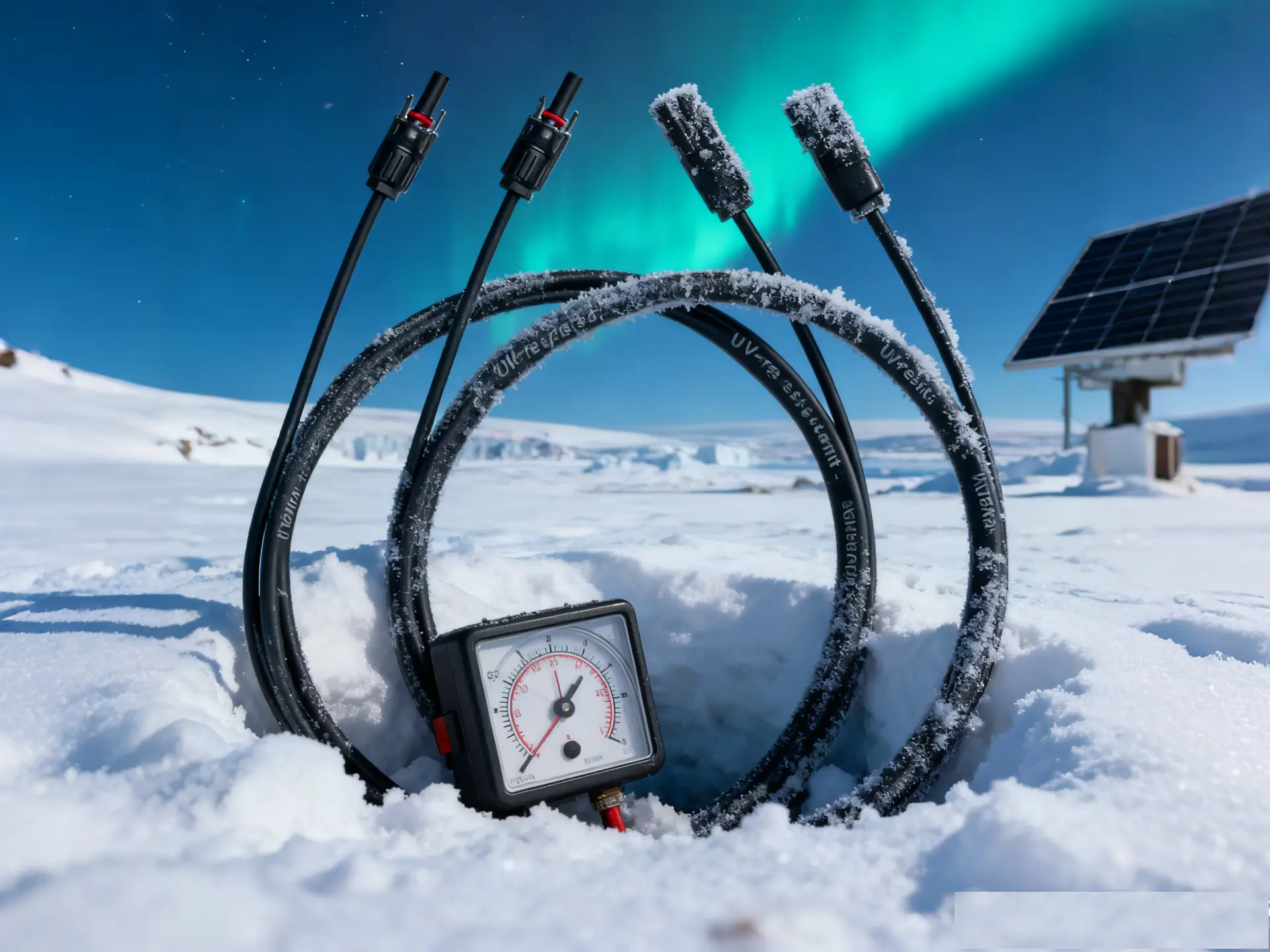
Built for Harsh Environments
These cables and connectors are made with UV-resistant jackets and sealed gaskets. The IP67 rating4 means they can withstand temporary immersion in water and complete dust protection.
Look for certifications such as:
- TÜV Rheinland (Europe)
- UL 4703 (North America)
- IEC 62852 (International standard)
- RoHS compliance (Environmental safety)
My Experience
I once tested two cable types side by side: one certified and one low-cost generic. After eight months outdoors, the uncertified one cracked and rusted around the contacts. The certified MC4 cable still looked new. From then on, I only use TÜV-certified cables for outdoor jobs — they’re worth the small extra cost.
How Do MC4 Extension Cables Connect Solar Panels to Charge Controllers?
Even if you have quality panels, a weak connection to your controller can waste energy or cause system failure.
MC4 extension cables link panels to charge controller5s through secure male-female connections, preserving correct polarity and minimizing voltage loss.
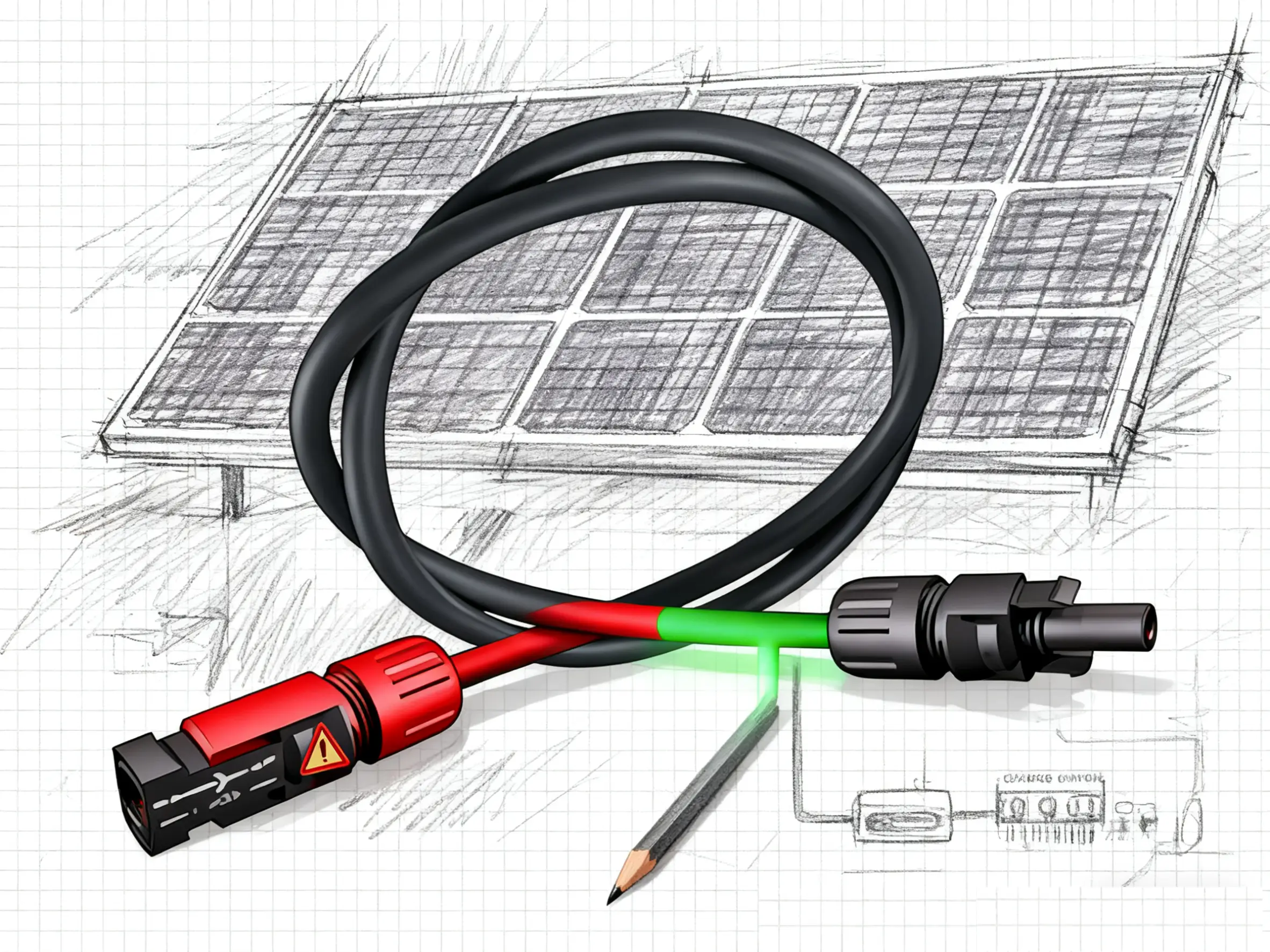
Step-by-Step Connection
To connect a panel array using MC4 extension cables:
- Plug the panel’s male MC4 into the female connector of the extension cable.
- Connect the female MC4 from the panel to the male side of another extension cable.
- Run these extended cables to the charge controller.
- Use MC4-to-ring or MC4-to-bare-end adapters to attach to controller terminals.
- Double-check polarity before powering the system.
This configuration allows quick disconnection for maintenance while preventing accidental reverse wiring.
Why It Matters
I’ve seen installers accidentally reverse polarity due to unclear cable labeling. Always check “+” and “–” signs before plugging in. Proper polarity keeps the system safe and prevents damage to your controller and batteries.
Conclusion
MC4 connector extension cables make solar systems safer, simpler, and more efficient — turning distance from a challenge into flexibility.
-
Explore this link to understand the applications and benefits of MC4 connector extension cables in solar energy systems. ↩
-
Learn more about solar panel output leads to grasp their role in efficient energy transmission within solar setups. ↩
-
Learn about voltage drop's impact on solar systems to optimize your setup and enhance efficiency. ↩
-
Learn about the IP67 rating and how it ensures protection against water and dust, crucial for outdoor cable performance. ↩
-
Exploring charge controllers will help you grasp their role in managing energy flow and protecting your solar setup. ↩

